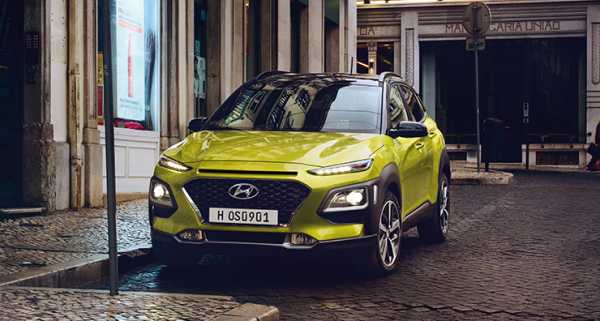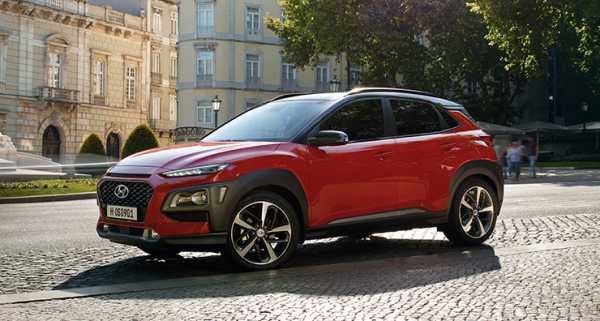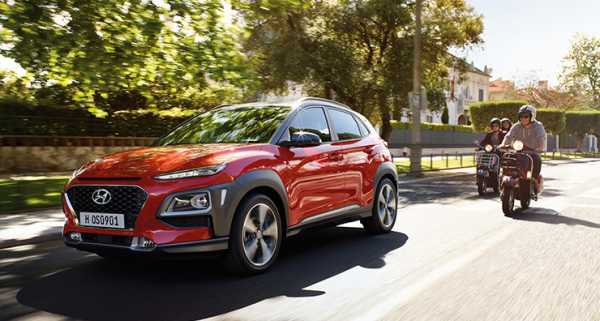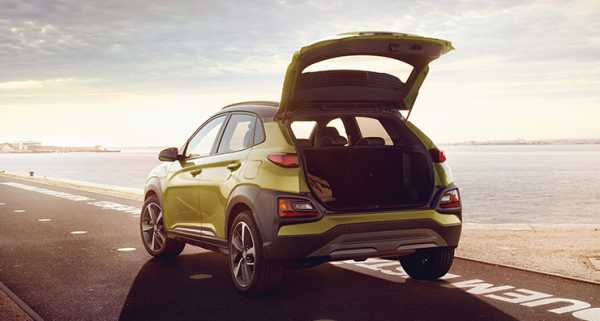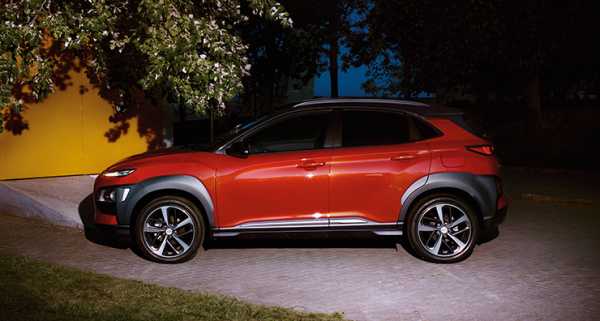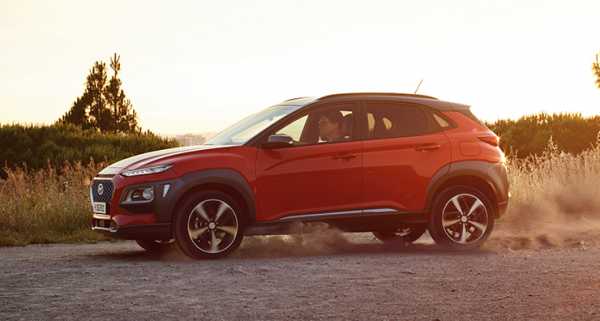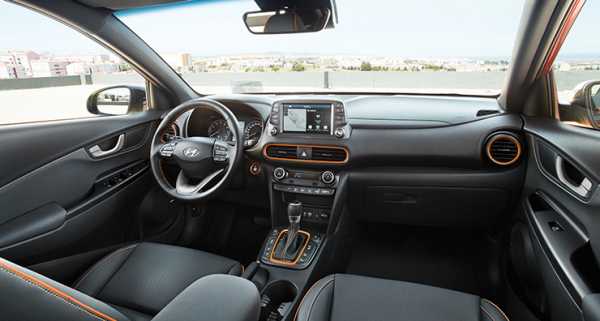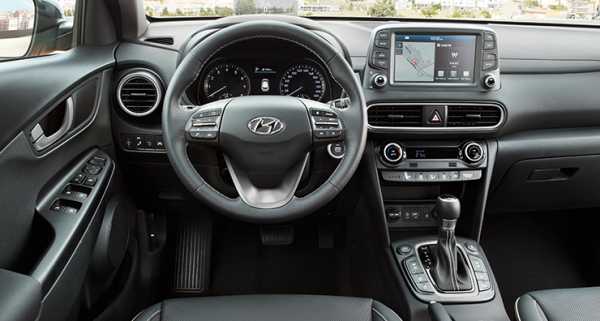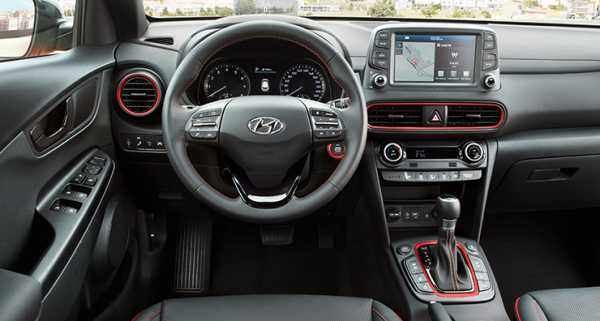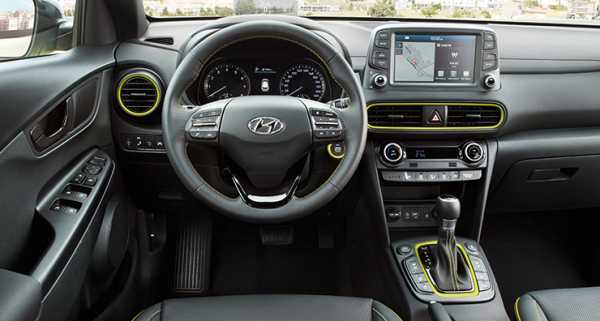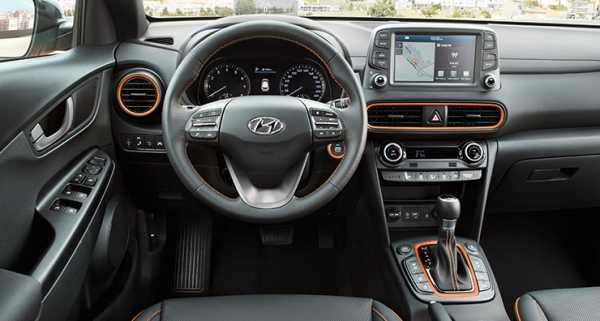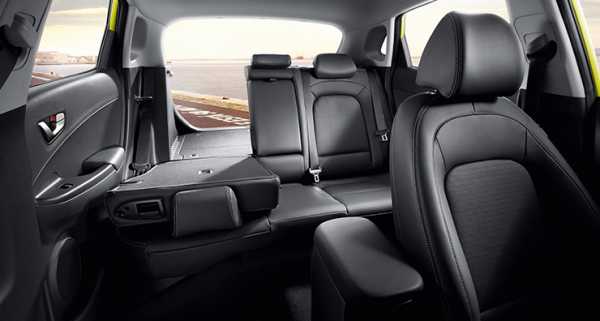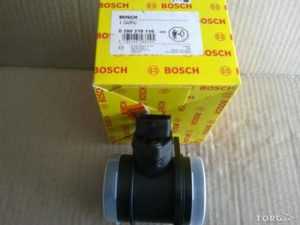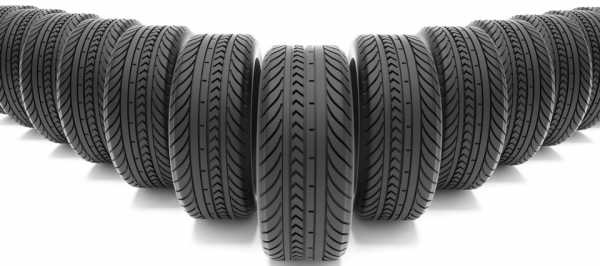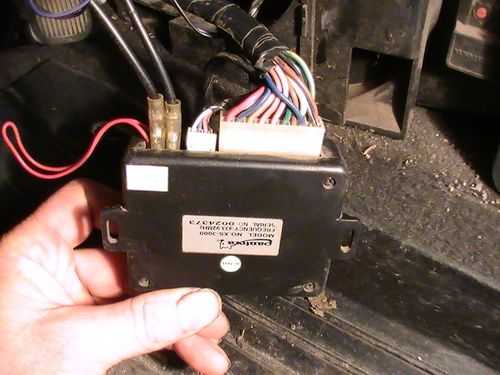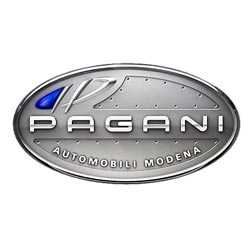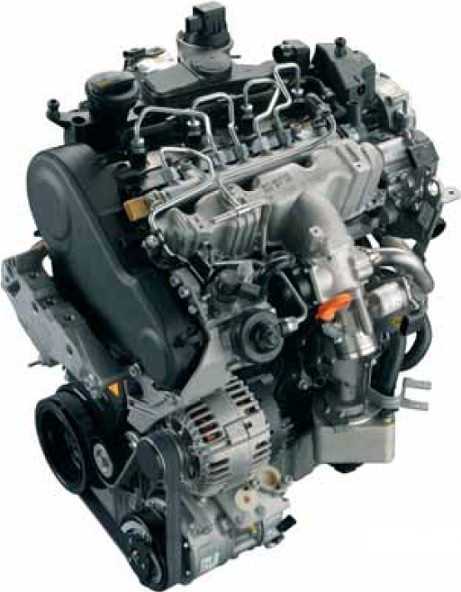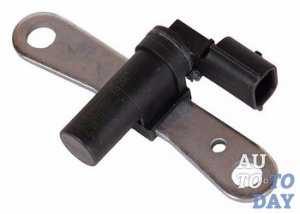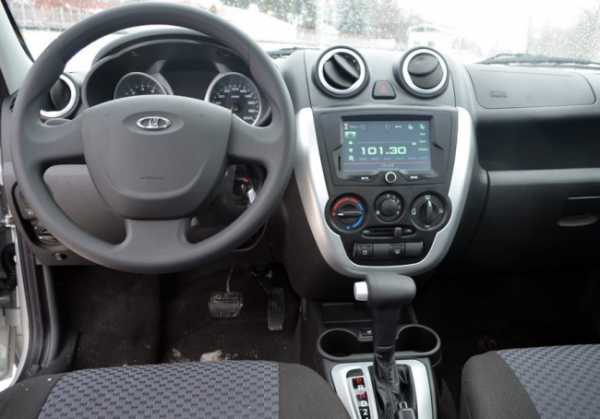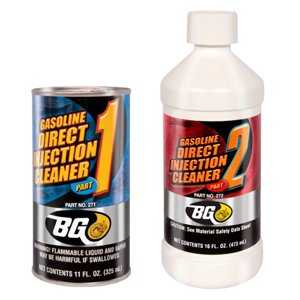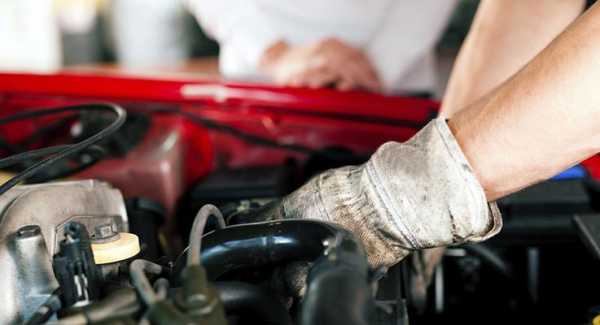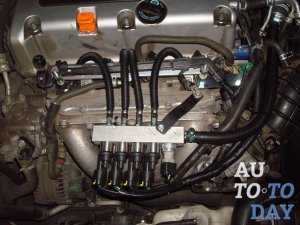2018 hyundai kona
2018 Hyundai Kona - For every turn, there's cars.com.
The subcompact SUV class has stretched the definition of sport utility vehicle more than most. Some entrants, like the C-HR, offer a carlike ride height and skip all-wheel drive (it's front-drive only). The Kona at least offers all-wheel drive, making it easier to think of it as an SUV, but its low ride height and overall shape call to mind a more traditional small hatchback.
Our test car was a front-wheel-drive Kona SEL with a $22,405 as-tested price ($980 destination charge included). See how the Kona's specs compare with the Trax, HR-V and C-HR.
How It Drives
The Kona's driving experience impresses in many ways. It's easy to maneuver in the city and secure at highway speeds. The transmission is quick to react when you need more power, and it shifts smoothly. It feels stable in quick corners, with limited body roll. Combine that with its responsive steering, and the Kona is surprisingly fun to drive.
The thing that reminds you of the Kona's entry-level position in Hyundai's SUV lineup, however, is its suspension tuning. It has a firm ride, like the C-HR and Ford EcoSport, and it lacks refinement when you hit bumps and ruts.
SE and SEL Konas are powered by a 2.0-liter four-cylinder engine that makes 147 horsepower. Limited and Ultimate trim levels get a turbo four-cylinder rated at 175 hp. The 2.0-liter engine revs smoothly and feels well-matched to the standard six-speed automatic transmission. There's some gas-pedal lag when accelerating ... Show full review
The subcompact SUV class has stretched the definition of sport utility vehicle more than most. Some entrants, like the C-HR, offer a carlike ride height and skip all-wheel drive (it's front-drive only). The Kona at least offers all-wheel drive, making it easier to think of it as an SUV, but its low ride height and overall shape call to mind a more traditional small hatchback.
Our test car was a front-wheel-drive Kona SEL with a $22,405 as-tested price ($980 destination charge included). See how the Kona's specs compare with the Trax, HR-V and C-HR.
How It Drives
The Kona's driving experience impresses in many ways. It's easy to maneuver in the city and secure at highway speeds. The transmission is quick to react when you need more power, and it shifts smoothly. It feels stable in quick corners, with limited body roll. Combine that with its responsive steering, and the Kona is surprisingly fun to drive.
The thing that reminds you of the Kona's entry-level position in Hyundai's SUV lineup, however, is its suspension tuning. It has a firm ride, like the C-HR and Ford EcoSport, and it lacks refinement when you hit bumps and ruts.
SE and SEL Konas are powered by a 2.0-liter four-cylinder engine that makes 147 horsepower. Limited and Ultimate trim levels get a turbo four-cylinder rated at 175 hp. The 2.0-liter engine revs smoothly and feels well-matched to the standard six-speed automatic transmission. There's some gas-pedal lag when accelerating from a standstill but selecting Sport mode wakes the Kona up; gas-pedal response is notably better, upshifts are delayed and the SUV feels a lot peppier as a result.
Acceleration is acceptable in the city, but the engine doesn't have much reserve power at highway speeds; even though the automatic transmission is quick to kick down, passing power is modest.
Regardless of the engine, front-wheel-drive Konas get an EPA-estimated 30 mpg in combined driving, while all-wheel-drive versions are rated 27 mpg combined. Looking at front-drive competitors, the Kona's estimated gas mileage tops the Trax (28 mpg) and C-HR (29 mpg) but trails the automatic-equipped HR-V (31 mpg).
The Inside
After taking in the Kona's daring exterior styling, the interior may be something of a letdown for shoppers. The cabin is very traditional, for one, and it uses relatively basic materials. The headliner is cardboard-like, and hard plastic is used extensively — from the door panels and dashboard to the center console. It's of the nicer, low-gloss variety, and some of it has unique patterns rather than ordinary graining, but since you touch it so often — whether resting your arm on the door or your knee against the center console — it's a frequent reminder of the Kona's entry-level status. Then there are the three dials for the manual air conditioning system that already feel 10 years old. Basic interior quality isn't uncommon in this class, but some competitors, like the HR-V and C-HR, do it better.
Other elements, though, impress. The cloth front seats are comfortable and feature an attractive houndstooth pattern. Even though seat comfort is good, I did want the height-adjustable driver's seat to go higher; even with the seat at its highest position I still felt like I was sitting too low.
The multimedia system is another highlight. It has a standard touchscreen with intuitive menus, as well as supplementary steering-wheel controls. Apple CarPlay and Android Auto smartphone connectivity are standard, and CarPlay worked well with an iPhone 8; the Maps app responded quickly, it was easy to switch between CarPlay and Hyundai's multimedia experience, and the screen looked great.
One minor multimedia downside, though, is reception quality for the available HD Radio; the HD signal kept going in and out during my testing — much more so than in other cars. It got annoying after a while, so I turned it off and just listened to the regular FM broadcast.
There's also more backseat room than you might expect; taller adults sit comfortably with enough legroom and headroom. There's not much in the way of extra space, but the Kona is space-efficient enough to carry four adults.
Cargo and Storage
The Kona's cargo area measures 19.2 cubic feet. When you need more space, the 60/40-split backseat folds flat with the cargo floor for 45.8 cubic feet of maximum cargo room. A cargo cover and underfloor organizer for odds and ends are standard. Storage areas include a small console bin and a spot for a smartphone near the standard USB port.
Safety
In Insurance Institute for Highway Safety tests, the Kona received the highest rating of good (out of a possible good, acceptable, marginal or poor) in all crashworthiness tests. Additionally, the SUV's optional automatic emergency braking system is rated superior — the best possible ranking. Poor headlight performance and a marginal rating for Latch connector usability (something we also observed in our Car Seat Check) were its only shortcomings in IIHS tests.
To get the most advanced active safety features you must upgrade to an SEL or Ultimate trim; a $1,500 Tech Package for the SEL adds forward automatic emergency braking with pedestrian detection, lane-keeping assist and a driver-drowsiness monitor. (All these safety features are standard on the top-of-the-line Ultimate model.)
Should I Buy It?
If you want a small SUV that delivers decent utility and passenger space, is relatively fun to drive, includes a lot of standard features and looks like little else on the road (especially now that the Jeep Cherokee has different styling), the Kona is worth a look. The basic interior and at-times-harsh ride may be deal-breakers for some, but those are the biggest shortcomings in an otherwise-compelling package.
Cars.com's Editorial department is your source for automotive news and reviews. In line with Cars.com's long-standing ethics policy, editors and reviewers don't accept gifts or free trips from automakers. The Editorial department is independent of Cars.com's advertising, sales and sponsored content departments.
Hide full review2018 Hyundai Kona Review, Ratings, Specs, Prices, and Photos
Small cars aren’t savagely equipped anymore. Despite the Kona’s sub-$20,000 price tag, it boasts standard amenities that wouldn’t be out of place on a car twice its price. Even base Konas are equipped with cloth seats, 16-inch wheels, power features, a 60/40-split folding rear seat, Apple CarPlay and Android Auto compatibility, Bluetooth connectivity, a rearview camera, and a 7.0-inch touchscreen for infotainment.
That’s good base equipment, especially the touchscreen, and Hyundai’s superlative 5-year/60,000-mile warranty gives the new Kona three points above average. We take one back for some options agita that we describe below and land at a 7 out of 10 for features. (Read more about how we rate cars.)
Hyundai offers the Kona in SE, SEL, Limited, and Ultimate trim levels with all-wheel drive optional at every stop for $1,300 more.
The SEL trim level will be the most popular with buyers and it’s our pick for best value. It upgrades the wheels to 17 inchers, adds blind-spot monitors, keyless ignition, satellite radio, heated front seats, and a leather-wrapped shift knob and steering wheel. A popular options package for $1,500 goes further with a sunroof, active safety features (that we cover separately), and power adjustable seats. That popular equipment package isn’t available with certain exterior colors, including a red and black color combo that we think looks best on the Kona. That’s frustrating and a Hyundai spokesman said that may change—we hope it’s soon.
The Limited trim level adds an uprated engine, LED taillights, 18-inch wheels, a standard sunroof, leather upholstery, and a power adjustable driver’s seat, but skips the active safety features altogether—it’s not even a spend-up option.
The Ultimate trim throws the rest of Hyundai’s gear at the Kona for nearly $30,000 all-in. It adds an 8.0-inch touchscreen with premium Harman Kardon audio, a head-up display, wireless charging mat for a smartphone, standard active safety equipment, automatic wipers, and navigation.
The premium audio sounds great, and the uprated touchscreen is nice, but the head-up display and other gear make the big price a tough ask.
Regardless of trim level, there’s just one standard USB port, underneath the climate controls. It’s the only way to run Apple CarPlay and Android Auto, which means it’s 2.1 amps, but it also means that charging multiple devices will take a plug into the 12-volt socket. A Hyundai spokesman told us that the company recognized the oversight and will include a small dongle in each Kona for new buyers, but there’s no USB chargers—or 12-volt sockets—for rear passengers available at all.
We’d be more than happy with an SEL with active safety right around $25,000, if it were our money.
Review continues below
Kona Highlights
Page sharing
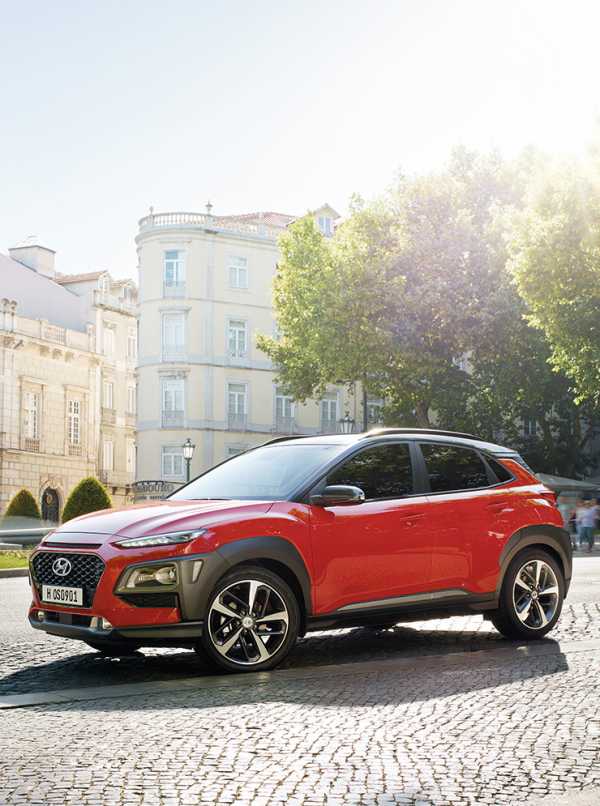
You drive it. You define it.
Sometimes the best moments are the ones where the world doesn't shape us - but we shape it. That's the essence and the spirit of Kona. A dynamic combination of style and performance featuring the finest of cutting-edge technology, this compact SUV deserves a closer look.
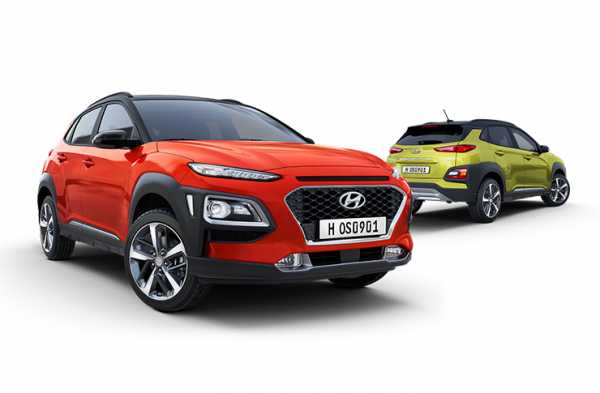

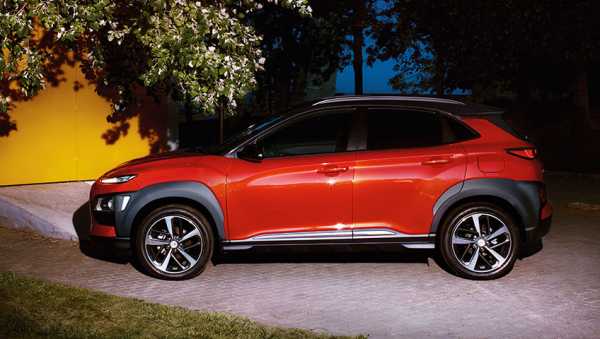
Combining sculpted lines with a stylish edge, the all-new Kona is expressive from every angle. The Kona’s two-tone roof and exterior mirrors also give you the possibility to customize color combinations to fit your personal style. Dare
to be different.
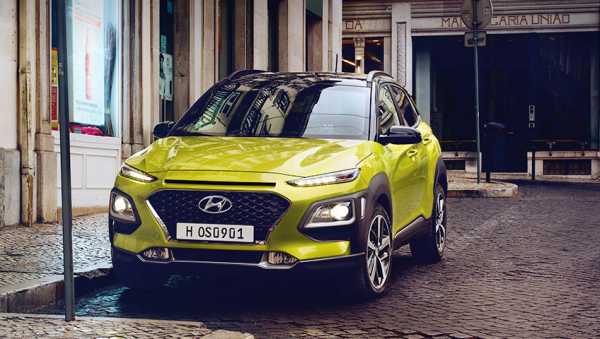
Sometimes it’s good to head in a new direction, like we have with the all-new Kona. At the front, the twin headlight design with LED daytime running lights creates an unmistakable
front light signature.
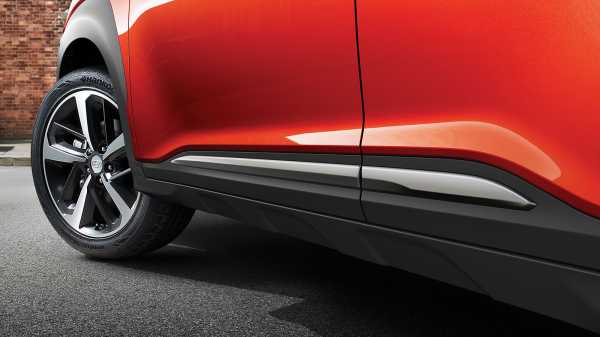
Real style is a matter of being yourself on purpose.
Like the all-new Kona.
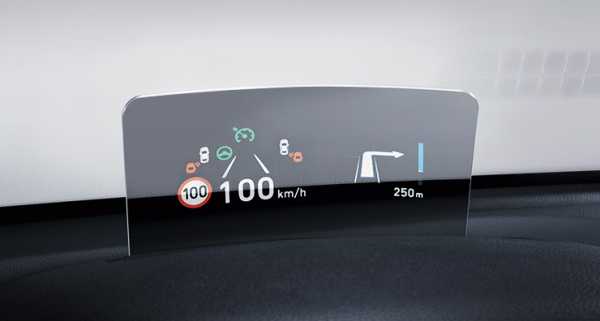
Featuring class-leading luminance for easy visibility, our new head- up display helps you stay safe by projecting important information like speed, navigation commands, and warnings right into your line of sight.
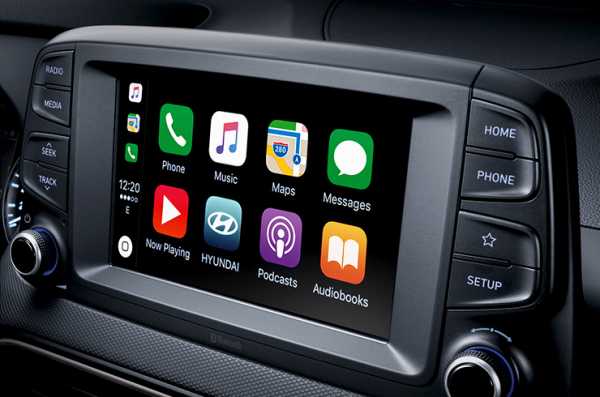
The all-new Kona provides you with the seamless connectivity you expect and innovative tech that makes life easier. The 8” touch screen display makes everything easily accessible with Apple CarPlay™ and Android Auto™. Express yourself.
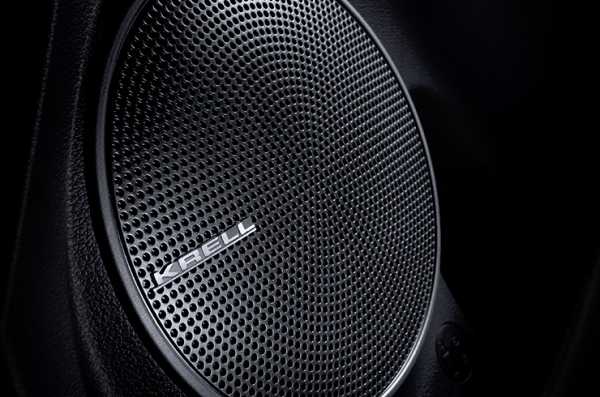
The premium sound system from KRELL delivers stellar sound performance so you can rock it in style.
Gallery
Specification
2018 Hyundai Kona Reviews and Rating
- Quirky exterior styling
- Available with a turbo engine
- Lots of standard features
- Active safety tech limited to SEL and Ultimate trims
- Cargo space trails some competitors
- Multilink rear suspension available only with all-wheel drive
The 2018 Hyundai Kona is an all-new subcompact crossover, slotting below larger Tucson.
Trim Levels (Interior and Exterior Options)
The 2018 Hyundai Kona is a subcompact crossover that slots below the Tucson as the automaker’s new entry-level crossover. Front-wheel drive come standard and all-wheel drive is optional on all trims.
Kona SE: The base Kona SE comes with 16-inch alloy wheels, a rearview camera, full LED headlights, Bluetooth, a six-speaker audio system, cloth uphosltery, keyless entry, a 7.0-inch touchscreen, as well as Android Auto and Apple CarPlay integration.
Kona SEL: Moving up to the SEL grade adds heated side mirrors, 17-inch alloy wheels, blind-spot monitoring, a leather-wrapped steering wheel, heated front seats, keyless start, and a leather shift knob.
Kona Limited: The Limited trim adds the 1.6-liter turbo-four, a power-operated driver’s seat, a sunroof, 18-inch alloy wheels and LED taillights.
Kona Ultimate: Opt for the range-topping Ultimate trim and you get rain-sensing wipers, a head-up display, a wireless charging pad, an 8.0-inch touchscreen, an Infinity premium audio system, and navigation.
Key options and features include a lime green exterior that’s paired with a black interior with lime green accents, a dual-level cargo area, and a multilink rear suspension for all-wheel-drive variants.
Performance and Fuel Economy
The 2018 Hyundai Kona is available with two engines, 2.0-liter I-4 with 147 hp and 132 lb-ft of torque and paired to a six-speed automatic transmission. A 1.6-liter turbo-four rated at 175 hp and 195 lb-ft is optional and comes exclusively with a seven-speed dual-clutch automatic transmission.
The Kona is EPA-rated at 27/33 mpg city/highway with the base engine and front-wheel drive, or 25/30 mpg with all-wheel drive. Upgrade to the turbo-four and fuel economy is 28/32 mpg with front-wheel drive or 26/29 mpg with all-wheel drive.
Safety
Active safety tech such as forward collision warning, automatic emergency braking, pedestrian detection, lane keeping assist, driver attention assist, automatic high beams, blind-spot monitoring, and rear cross-traffic alert are available on the SEL and Limited trims.
Utility
Behind the split-folding rear seats, there’s 19.2 cubic feet of cargo space that can be expanded to 45.8 cubic feet. The 2018 Hyundai Kona is not rated for towing.
What We Think
In a 2018 Quick Drive we said that the Kona’s steering was on the heavy side while the suspension did a good job dealing with uneven surfaces. The optional 1.6-liter turbo-four offers plenty of power thanks to its wide powerband.
Cool Fact
The optional 175-hp 1.6-liter turbo-four in the 2018 Kona is shared with the larger Tucson.
Key Competitors
- Honda HR-V
- Subaru Crosstrek
- Mazda CX-3
- Jeep Renegade
- Fiat 500X
"Питер - АТ"
ИНН 780703320484
ОГРНИП 313784720500453
